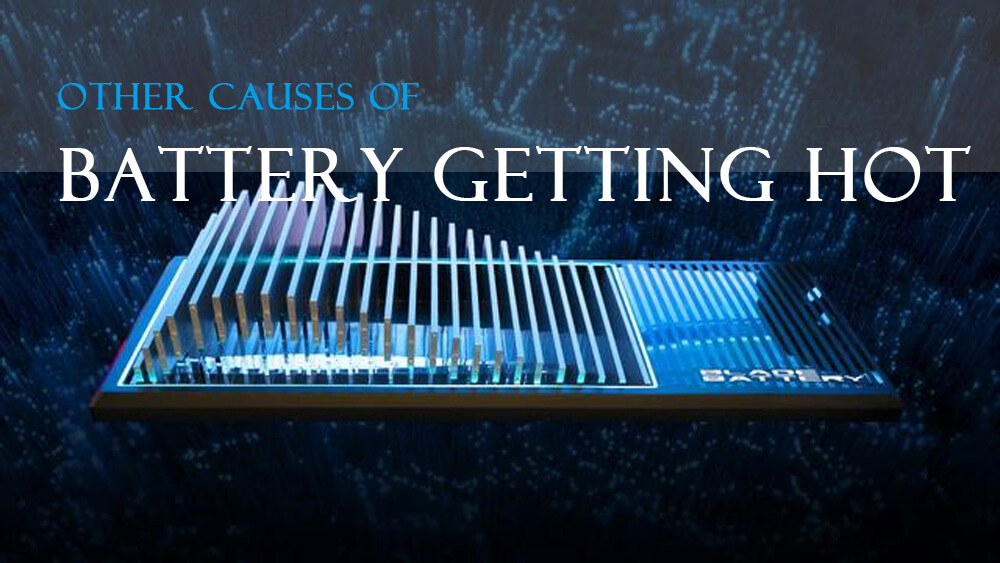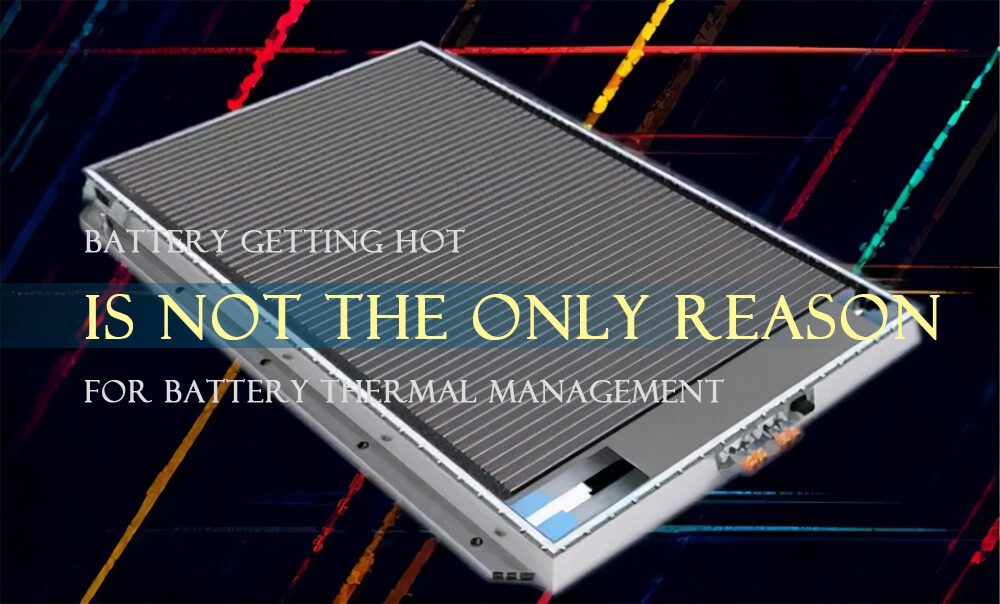Home » battery thermal management system » Why is my battery getting hot when charging?
Why is my battery getting hot when charging?
Why is battery getting hot?We need battery thermal management
Battery getting hot generally comes from chemical reaction heat and joule heat due to impedance in the process of lithium ion removal or insertion in the cell, or from the unbalanced energy consumed by heat in the passive balance process of the cell, and the heat generated by the operation of electronic devices and thermal management system in the battery pack.
In the design of battery thermal management system, the influence of battery getting hot on electronic devices should not be ignored. If proper protection measures such as battery thermal management systems are not taken into account, or if appropriate locations are not found for these electronics, then these heated electronics can adversely affect cell life.
In addition, the high discharge rate causes higher heat to be generated inside the cell, so the battery getting hot. If often at a higher rate of discharge, then the cell interval time is short, there is no enough cooling time, the cell temperature will gradually increase;
At the same time, the thermal management system does not have enough time to mobilize the cooling system to bring the cell temperature down. A good analogy can be drawn to the ladder effect; When you step on the accelerator, the battery discharges rapidly.
As the battery continues to charge and discharge, the battery thermal management system has no time to cool the battery down from the last discharge, resulting in a steady increase in battery temperature.
For example, a conventional hybrid electric vehicle’s battery will continuously discharge during driving and then immediately start charging again, so that after a charging and discharging cycle, the battery may not have time to cool down before starting a new cycle.
In this way, the temperature of the battery pack will slowly and continuously rise. If the battery is allowed to be out of use for a certain amount of time, the cooling system can bring the battery temperature down to its normal operating temperature range.
Figure shows the increase in battery temperature in this operating mode. Although this is not actual performance data, such a heat generation model would be expected in similar applications.
Is it bad if battery getting hot? necessity of battery thermal management
To maximize the performance of lithium-ion cells, they need to be maintained at 23 to 25℃during the service cycle. However, during operation, the cell undergoes an exothermic process — battery getting hot due to the occurrence of exothermic chemical reactions within the cell and internal resistance of the cell.
Regardless of the exothermic process or the high ambient temperature, battery pack design must have battery thermal management to cool down the battery temperature to maintain their proper operating temperature range, thus ensuring the performance and life of the battery system.
If the temperature reaches 30 to 35℃or higher, it is important to use battery thermal management to prevent battery getting hot continuously and lower the temperature to ensure battery life and performance and keep off battery failure. Working at higher temperatures, the cell will lose its life due to accelerated aging.
A practical example of car battery getting hot:
Here is a practical example that gives us a more intuitive sense of the importance of battery thermal management. In 2012, a group of Arizona Nissan owners complained about problems with their cars in a short period of time, from short driving ranges to fast battery decay. The complaints weren’t many, but they were enough to draw national media attention to Nissan and the electric car industry.
In fact, Nissan’s systematic evaluation of the vehicles showed that those with capacity decay had higher-than-average mileage and that those owners often charged their cars with fast charging. Batteries are typically rated for average performance according to the manufacturer’s specifications, but continuous high temperatures and extreme operating conditions can accelerate the decline in battery capacity, resulting in reduced range.
Although the user manual of these Nissan has stated precautions for battery temperature , such as that the vehicle should not be exposed to temperatures above 49 for more than 24 hours; The vehicle should not be placed in an environment with a temperature below -25 for more than 7 days.
The Nissan’s battery pack, designed by an AESC, does not have an active battery thermal management system. Instead, it uses metal modules and battery packaging to transfer heat. This means that there is no way to speed up the cooling rate to cope with the high rate of continuous heating in hotter environments or under frequently rapid discharge conditions.
Although metal packaging is cheaper and easier to market, such a design leaves the battery pack thermal management system with significant drawbacks.
Other causes of battery getting hot
Finally, when it comes to battery thermal management, we should talk about high-voltage electronics and balancing systems. High-voltage electronics are also the main cause of battery getting hot in many systems, especially in smaller modules. In addition, battery equalization converts excess electrical energy into heat energy.
Essentially, when you equalize a module, you also let battery getting hot. In the case of three-stage charging, most battery systems are designed to activate the thermal management system quickly during these charging events, otherwise the module will generate rapid heating.
If there is no cooling system during rapid charging, the heat generated is high enough to decay the battery’s capacity, or heat generated is high enough to shut down the battery system before cooling. This overheating can lead to reliability problems with battery module systems, as well as rapid decay of lithium-ion batteries.
The accumulation of heat caused by the heat generated in the battery system is generally easy to cool by the cold air around it. However, the designer in this case needs to ensure that air flows first to the cell and then to the electronics, or that air flows parallel to the electronics and the cell.
Most electronic devices have a wider operating temperature range than the cell, so it is more efficient to cool the cell before the electronic device. Although liquid cooling is faster, it is difficult to cool electronics by this method unless the cooling plate is designed into the battery. In addition, in order to ensure safety, the position of electronic devices should be specially designed in the design of energy storage system.
Battery getting hot is not the only reason for battery thermal management
Another function that a thermal management system needs is to heat the battery. In general, battery system designers do not want to actively heat the battery unless the battery is at a very low temperature and the rate of heating is not too high.
Most lithium-ion batteries now use liquid electrolytes, which can solidify or lose conductivity at sub-zero temperatures, preventing the cells from delivering as much power as they should at lower temperatures.
In liquid-cooled systems, a heat pump can be added to the system to provide warm fluid through the cooling loop, which will slowly make the battery getting hot. Another method that may have been used is to use a membrane heater.
Another situation is that the heater is not mainly used for heating, but to reduce the cooling rate of the battery, such as the car stopped using in outdoor use, and the temperature of the battery after a few days to reduce to 25℃, during which the vehicle battery system will have a good performance.
In addition, although the heater is usually powered by the battery pack itself, some energy is lost, but this loss is small and temporary.

























